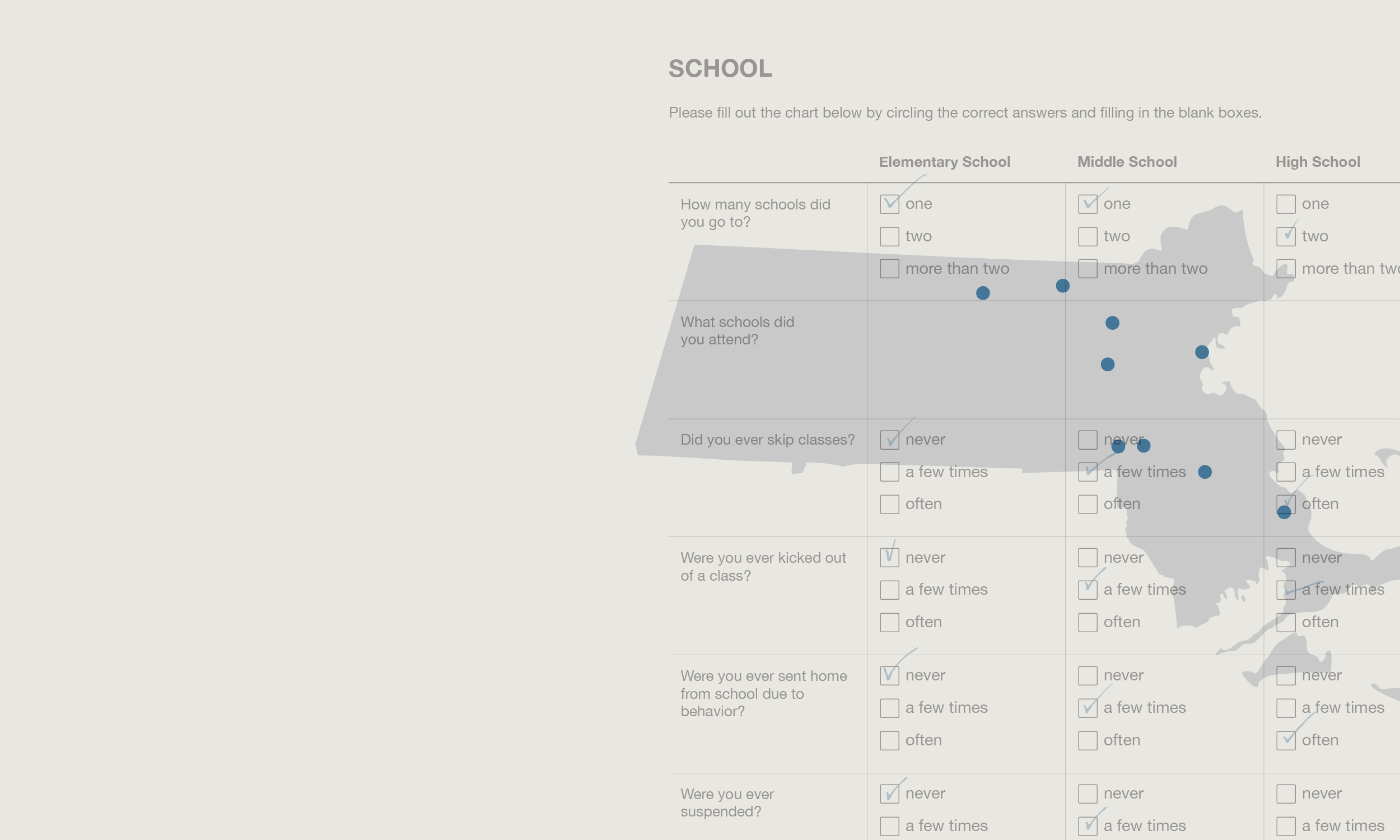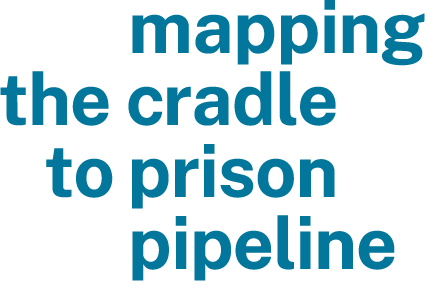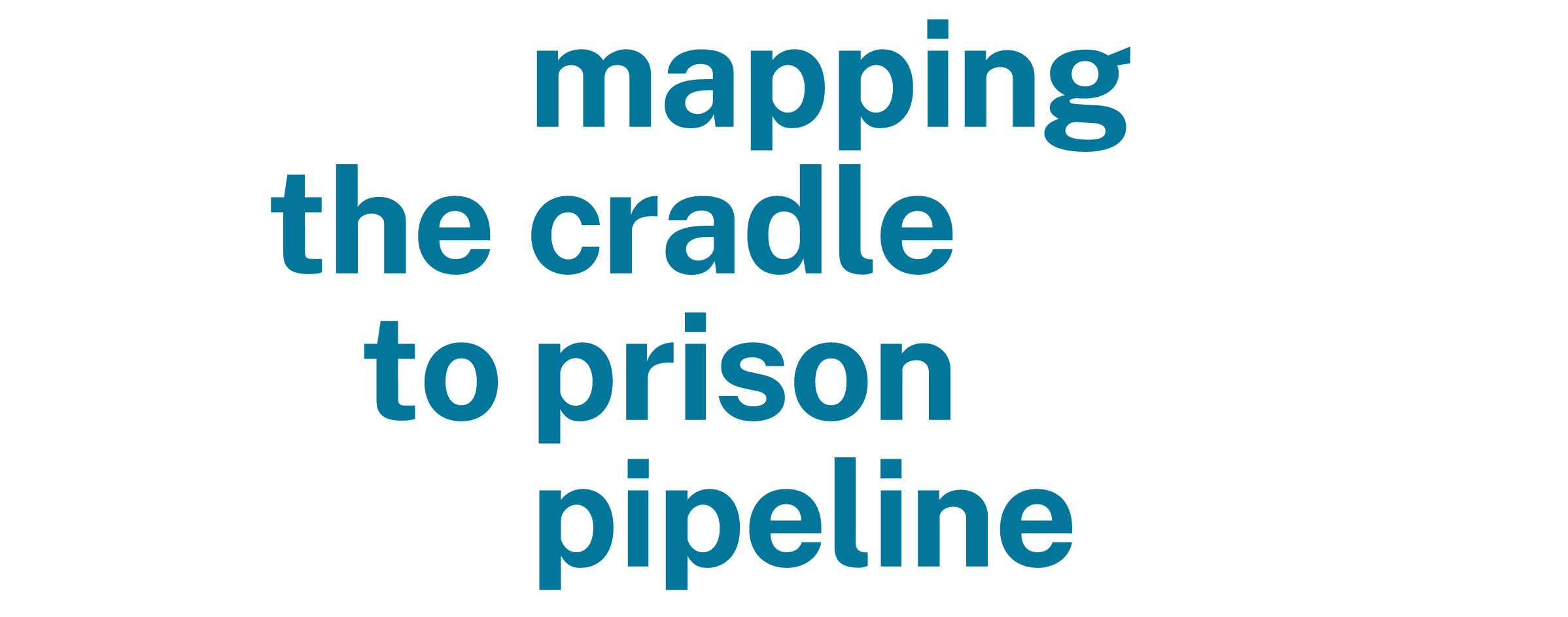
“The judge said to me, ‘If I was to let you go, the tax payers of this state would shun down on me. But if I was to incarcerate you, you might come out as a better criminal.”

Our survey of incarcerated individuals in Massachusetts aims to address critical data gaps relating to childhood experiences and systems involvement along the cradle to prison pipeline.

In a Northeastern collaboration between the School of Law’s Center for Public Interest Advocacy and Collaboration and the College of Art, Media & Design, the team diagramed the systems involved in the Cradle to Prison Pipeline to find potential points of intervention.
“Child poverty and neglect, racial disparities in systems that serve children, and the pipeline to prison are not acts of God. They are America’s immoral political and economic choices that can and must be changed with strong political, corporate and community leadership.”
The Cradle-to-Prison (C2P) Pipeline embodies the cumulative impact of multiple factors—beginning before birth and persisting through childhood, adolescence, and the teen years—that disproportionately diverts youth from communities of color toward incarceration.
Mass incarceration and the cradle-to-prison pipeline are manifestations of structural racism and white supremacy. Public policy choices — including laws, funding priorities, and institutional policies — have created and sustained these problems. Intentional changes to law and policy can also dismantle them.
Northeastern University's Cradle-to-Prison Pipeline Project is an interdisciplinary initiative that leverages the resources and expertise of Northeastern and its partners to end the criminalization of youth, in particular poor Youth of Color. The project produces research, analysis and visualizations to inform legislators, other policymakers, and the public and works to identify and support promising interventions to dismantle the cradle-to-prison pipeline.

